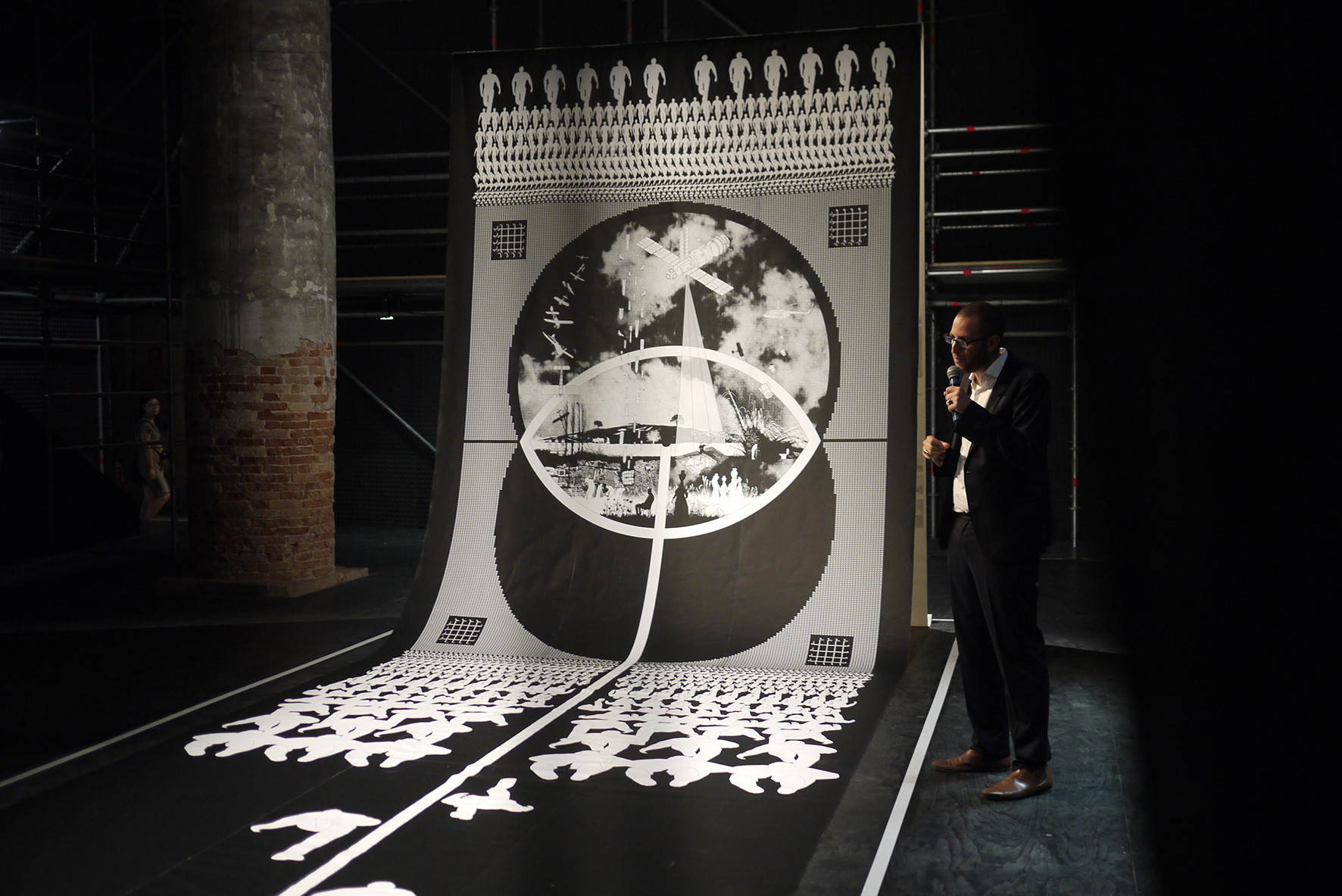
From August 12-15, architects, filmmakers and activists from Syria and the Arab World gathered in the Arsenale at the 2014 Venice Biennale for “excavating the sky,” a four-day event focusing on Syria and the production of its contemporary landscape from before WWI until today. The event took place in the context of the Monditalia exhibition and one of its key components was a “displaced pavilion” in Syria – a recently dug well providing water for a community of 15,000 people.
“As you know, Syria is currently undergoing a profound, and often violent, transformation, much of which is difficult to fully comprehend. It is my belief that architecture does play a role in this conflict, and that architects, with their disciplinary tools, must act more meaningfully and creatively in these struggles in/of space,” Khaled Malas, a Syrian architect and organizer of “excavating the sky,” told ArchDaily. “The 'displaced pavilion', in the form of a water-well, is an active embodiment of these struggles and our responsible participation as a discipline amongst those who have suffered years of neglect followed by war.”
To represent the "displaced pavilion" at Monditalia, a banner with a drawing of the well was hung in the Aresenale.
Read on after the break to learn more about the other key components of the event and the significance behind its name…

The sky was chosen as an important theme and part of the name of the exhibition because it’s “not a neutral place,” Malas explained. “ The sky is a place that we have, almost universally throughout history, viewed with upturned faces, often in wonder and awe. Yet within its brilliance lies the darkness of control, domination, and destruction. The sky is the domain from which powerful beings, whether gods or airmen, often violently impose their power upon the landscapes below.”
To challenge and examine the power of the sky, “excavating the sky” also highlighted four stories related to the concept of flying in Syria: the first airplane to land in Syria in 1914, the French-mandated shelling of Damascus in 1925, the Syrian Cosmonaut Muhammad Faris in 1987 and the story of a barrel bomb dropped from a helicopter into a latrine in 2014.

In addition, a panel discussion was held and four different films were also screened: 'A Flood in Baath Country' (Omar Amiralay, 2008), 'The Night' (Mohammad Malas, 1992), 'Step by Step' (Oussama Mohammad, 1978) and 'The Eternal Sergeant' (Ziyad Kalthoum, 2013).
“The act of 'excavating' has architectural, archaeological but also military defensive connotations. It also alludes to well-making processes, maintaining the wells as the primary component of this project," Malas said.
To learn more visit “excavating the sky’s” website.










